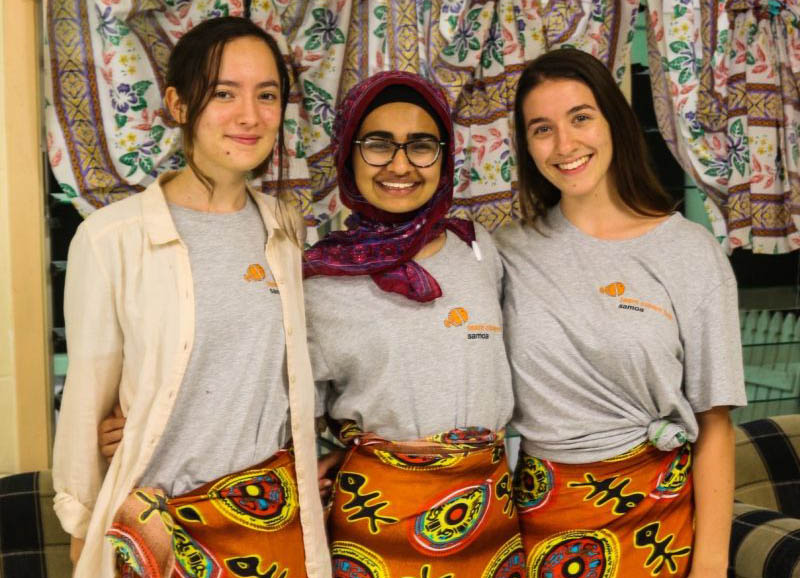“For me, there was always a motivation to do something meaningful. I just didn’t quite understand what that looked like or how it was to be done. Another thing I also knew was that I enjoy the wonder and freedom that comes with creating and innovating. Along came the decision to do engineering and to combine it with law to fulfill my passion for social justice. However, there was still a disconnect between wanting to create socially conscious design solutions and the opportunity to do so. So when the opportunity came up to undertake the EWB Design Summit with the University of Sydney and Engineers without Borders Australia, it seemed like the perfect opportunity to draw the link between technology and my principles of social justice and equality.
During the application process, we were required to list our expected outcomes from the fieldwork, and looking back at these I’m happy to report each one was met! One included applying and expanding my engineering knowledge and skills from beyond the classroom and in a situation affected by factors beyond the technical. In the Samoan context, it meant understanding the social and governance structures; not only on a large scale but also within the communities.
It was truly an amazing experience to not only see but experience the importance of Samoan culture on family and service. Specifically the notion that helping another and opening your home to others is a source of pride – a way of life essentially. We were lucky enough to become a part of the family; to become someone’s sister or daughter – to have someone become mum or dad for a few days. We participated in the intimate parts of family life, from eating talking and dancing together, to taro farming and Sunday morning church services where we were enveloped in the melodic voices of worship.
This culture of family and service became heavily embedded in our design process; we understood that the cultural and social importance of the matai (high chief) structure, and the role of religious and female oriented structures in the community were at the crux of successful design. The Samoan way also made its way into our group dynamic from classmates to friends. Seeing a mixture of people from different cultural, educational, social backgrounds share their own cultures in tradition heavy Samoa helped us make traditions of our own; and we quickly formed a family structure of our own. Personally, it felt surreal; going into this trip not knowing anyone, and to another country was confronting, but to form such bonds was truly amazing.
Amongst headaches, stomach aches, mosquito bites and sun burns there was always someone two steps ahead wanting to help. Hearing each other’s stories, whether on sandy beaches or rickety buses and learning from the wealth of knowledge each person had to give paired with our mutual passion to create social impact was a source of surprise and comfort every day. Forming friendships with people who for so many years had roamed the same university grounds without us even knowing each other existed would never had happened if not for opportunities like this.”
Personal development eventually melded into professional development. Interacting with our Samoan families helped us pick up on the quirks and conversation styles of our community and most importantly provided us with the confidence to carry out typical fieldwork activities such as interviewing. We were taught in early workshops never to ask yes or no questions; for which I can confirm is completely true, Samoans are a yes people! Observing and helping in day to day tasks such as cooking or farming gave us an insight into the inventiveness of our communities; from using an r-bar to de husk coconuts to using the end of a can to peel taro.
As a result, the human centred design process and strength based approach made its way off the paper and became apparent in front of us through just talking, doing and observing. My group in particular noticed the taro growing strengths of our community, on the same token however we also noticed that there was an opportunity to increase the value of their taro by reducing dependence on fresh taro. As a result we developed a dehydration system to dry the taro root to make chips and with further research we realised the potential to mill this and form taro flour or even dry the taro leaves as a food additive – the best thing we think since kale chips!
We presented our idea to community leaders and members. Seeing the pride in their faces in seeing the kids they’d hosted for five days learning from their community and giving back to the best of their ability, helped us realise once again that the design process could never be removed from the human element. We were given our final goodbye with a beautiful melodic goodbye song and of course a trip to the Rugby; essentially the only way it’s supposed to be done in Samoa!”


